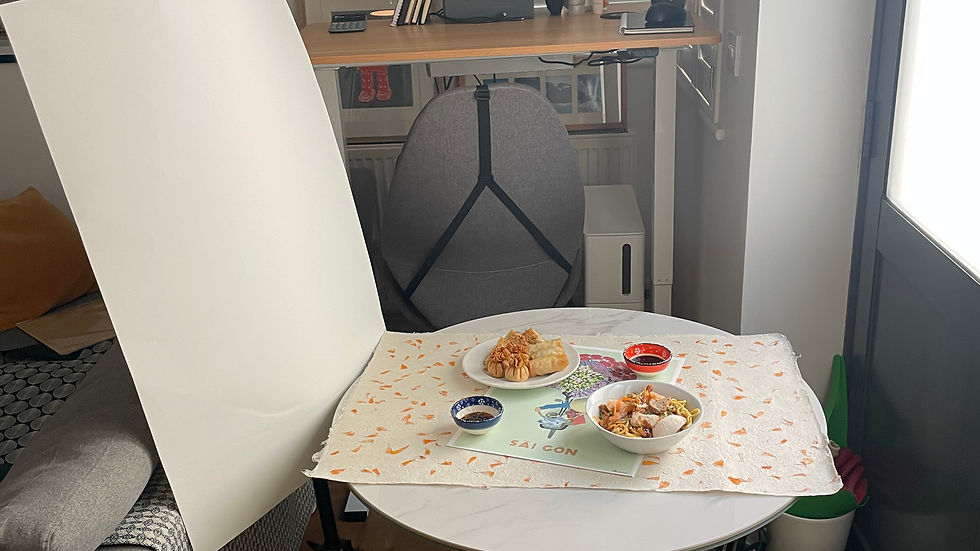Embracing Food Photography: A Journey in Sài Gòn
- Kamil Al Hinai

- Jun 25
- 2 min read
Updated: Jul 20
Over the last few months, I’ve found myself increasingly drawn to the intersection of two passions: food and photography.

Like many of you, I’ve always appreciated a beautifully presented meal or an artfully styled food photo. However, it wasn’t until recently that I decided to experiment and learn what goes into creating those mouth-watering shots we see in cookbooks, magazines, and online.
Setting Up My Studio
Armed with my camera, a tripod, some foam boards for reflectors, and plenty of trial and error, I set up a small makeshift studio in the corner of my living room. The first three photos below show my setup. It is simple and practical, focused on using the light I had available.


Capturing the Essence of Sài Gòn
For this shoot, I wanted to capture a feeling—a little slice of Sài Gòn on my table. I chose a vibrant background illustration and plated some classic Vietnamese-inspired street food: crispy spring rolls, wontons, and a hearty bowl of noodles with shrimp and pork. The result is the final image you see here.
Through this process, I’ve gained a deeper appreciation for the craft. Here are a few key elements to consider when photographing food:
The play of natural light on textures. Light can transform a dish, highlighting its unique features.
The impact of composition and color balance. Arranging the elements thoughtfully makes for a more inviting photograph.
The patience required to refine the smallest details. Sometimes, the tiniest adjustments make the biggest difference.

No Professional Studio Needed
Most importantly, I’ve realized that you don’t need a professional studio to start. Curiosity, creativity, and a willingness to learn go a long way.
Tips for Beginners
If you're new to food photography, here are some tips to help you get started:
Start With Natural Light: Use daylight whenever possible. It’s free and provides beautiful soft light.
Experiment with Angles: Don’t be afraid to try different angles. Overhead shots often work well for flat lays, while side views can add depth.
Use Simple Backdrops: A clean and uncluttered background can highlight your food better. Consider using a solid-colored tablecloth or a simple wooden table.
Play with Props: Adding utensils, napkins, or ingredients can enhance your photos and tell a story.



Comments